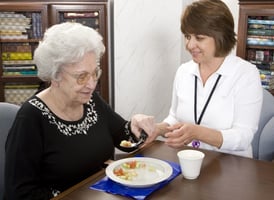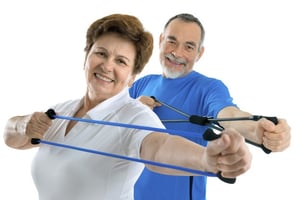A stroke occurs when the blood flow in a patient’s brain is disrupted because of a blood clot or...
6 Tips for Rehab Patient Caregivers
People who provide care at home for loved ones with debilitating injuries or medical conditions are at high risk for exhaustion, burnout and even stress-induced illness. But, for caregivers who care for patients requiring rehabilitation, the risks include physical injury.
Caregivers who help patients with mobility – whether it be moving from room to room or transferring from one chair to another – can strain muscles and even sustain back and neck injuries, said Wendy Fishman, director of rehabilitation services for Visiting Nurse Association of Ohio.
With a doctor’s order, VNA of Ohio’s home healthcare team works with patients who need rehabilitation following an accident, surgery or medical condition, such as a stroke. That team often includes physical therapists, who instruct the rehabilitation patients and their caregivers how to move – or assist with movement – safely.
“With patients who have difficulty moving, it is physically taxing on the caregiver,” Fishman said. “If they don’t understand how to use good body mechanics in the process of helping (the patients) to move, they can slowly injure themselves.”
6 Caregiver Guidelines for Helping Patients Move
- Plan the move ahead of time and be sure to determine what the patient is capable of before beginning.
- Always tell the patient who is to be moved what is going to be done before beginning.
- Allow the patient to help with the move as much as he is able.
- Count, “1, 2, 3” before making any movements with the patient.
- Be sure there is a chair or wheelchair within reach in case the move doesn’t go as intended.
- Caregivers should bend their knees and lift with their leg muscles, not with their backs.
In some cases, caregivers can make use of assistive devices to help with mobility and transfers. Those devices can be simple, low-tech tools like a gait belt, which the patient wears and caregiver holds to keep the patient steady, or a slide board, which can be placed under the patient between two surfaces to help the patient move from one to another.
For patients incapable of helping with their own movement, mechanical Hoyer Lifts do virtually all of the work, Fishman said.
She adds, “Caregivers must protect their own backs and bodies first, because if something happens to them, how will they help their loved ones at all.”
Call VNA of Ohio Today
Learn more about VNA of Ohio rehabilitation therapy services, or call us today at 1-877-698-6264.



